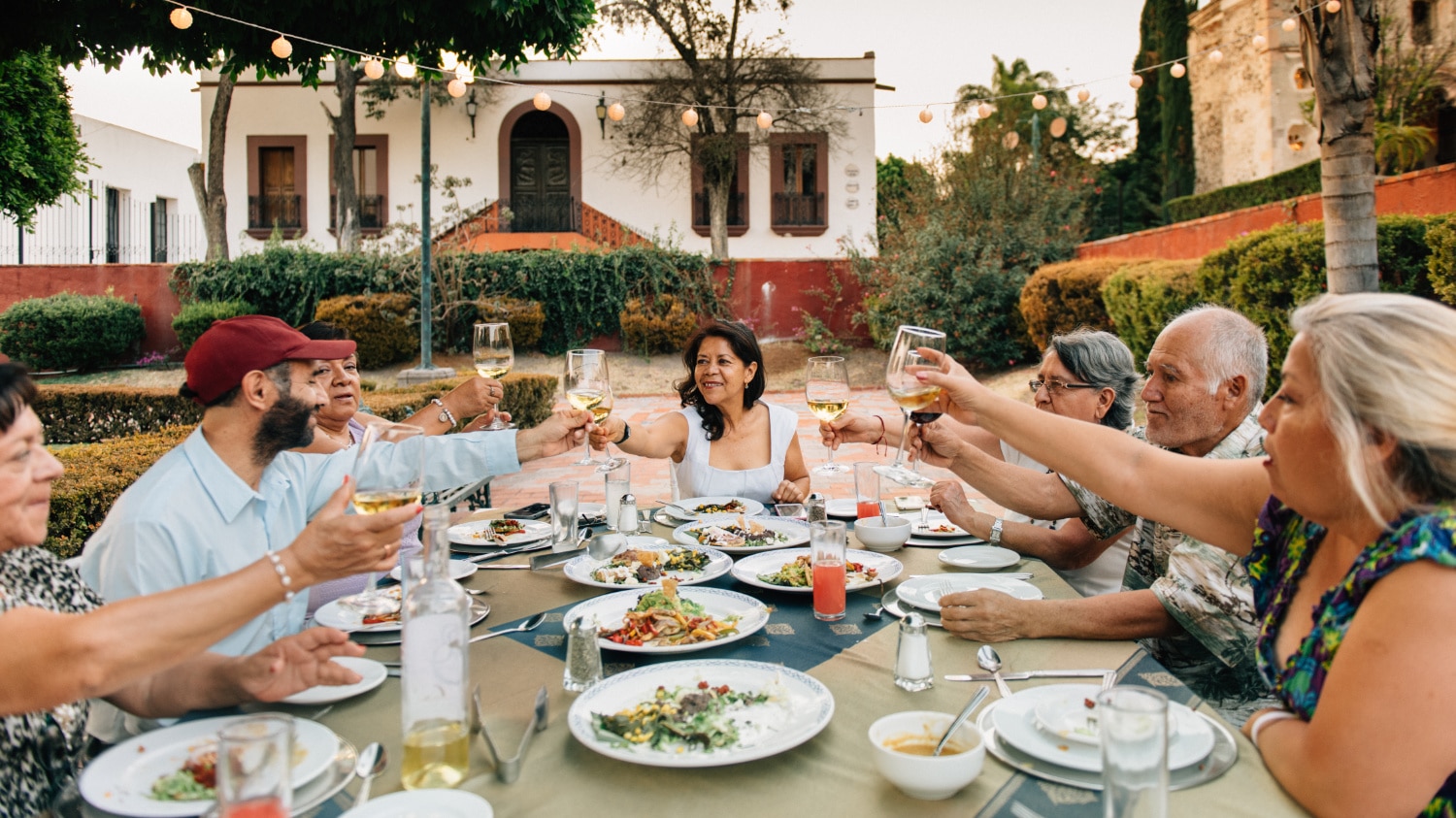10 Spanish Idioms for Your Mexico Vacation
1. Echar aguas: Used when you want somebody to watch over something or someone so you don’t get hurt. For example: Voy a saltar la valla. Échame aguas. – I’m going to jump the fence. Watch over me.
2. Eres ajonjolí de todos los moles: Mole is a Mexican dish that is usually served with sesame seeds. Literally this phrase means “You are the sesame seeds of all moles.” It is used to refer to someone that is at every event, even if uninvited, or pays attention to all gossip. For example: Te vi en la fiesta de Andrea y en la de Diego. Se nota que eres ajonjolí de todos los moles. – I saw you at Andrea’s party and at Diego’s. It’s obvious you like to be at every celebration.
3. Parir chayotes: If translated in a literal way, it would mean “you made me give birth to chayote squash.” If giving birth is hard, it is even tougher to conceive chayotes, which have spines. So, this expression means to do something incredibly difficult. For example: Esta tarea me está haciendo parir chayotes. – This homework is really hard.”
4. Es de hueso colorado: It is used when someone is a huge fan of something or somebody. For example, ¿Te tatuaste a un jugador de fútbol? Se nota que eres fan de hueso colorado. – You got a football player tattoo? It’s clear that you are an intense fan.
5. Poner los pelos de punta: It means to surprise or to scare someone. For example: Odio la mansión de enfrente; me pone los pelos de punta. – I hate the mansion across the street; it scares me.
6. El que se fue a la villa perdió su silla: This idiom comes from Spain, except that they use “Sevilla” instead of “Villa”. The story comes from two Spanish archbishops that exchanged regimes temporarily, when one of them wanted to reclaim his Sevilla reign, the other one refused. Villa is another way to refer to the Basílica de Guadalupe, a sanctuary in Mexico. Sometimes people add “…y se sienta en una tortilla” at the end of the phrase, to make it more Mexican. It means that if you get out of your seat for a moment, another person will take it. Or, if you let an opportunity pass you by, someone else will take it. For example: Lo siento Alex – el que se fue a la villa perdió su silla y se sienta en una tortilla. – I’m sorry Alex, you left, so you lost your seat – go sit down somewhere else.
7. A darle que es mole de olla: Mole de olla is a Mexican dish that’s really hard to make. Because of this, this expression applies when you have to start doing something really difficult. For example: Hoy tenemos que preparar el pastel de bodas, así que a darle que es mole de olla. – Today we have to make the wedding cake, so let’s start, because it’s complicated.
8. Me lleva el tren: When something goes wrong, this is the expression that people use to describe their anger. For example: Perdí mi boleto del concierto. ¡Me lleva el tren! – I lost my concert ticket. I’m furious!
9. Ya nos cayó el chahuistle: Chahuistle is a fungus that affects corn harvests. Therefore, this means that someone just caught you up doing something bad. For example: La policía está llegando. ¡Ya nos cayó el chahuistle! – The police are arriving. They’ve got us!
10. Tener el Jesús en la boca: When you are worried about something. For example: Anoche llegaste tarde a casa – me tenías con el Jesús en la boca. – Last night you arrived home late – you had me very worried.
How to Use Spanish Idioms in Everyday Life
Knowing more colloquial Spanish expressions will help you understand a culture and fit in. If you want to get the best of these idioms, you can think about how you would implement them into your everyday situations. You can also watch shows in Spanish, so you get used to hearing these expressions.
Finally, practicing your conversation skills over and over again is essential; TruFluency can help you with that, because they have great tutors that will customize your Spanish lessons so that you learn exactly what you need for any situation: work, vacation, speaking with family in Mexico, or something else. Trial classes are just $35 – if you have questions, contact us.





